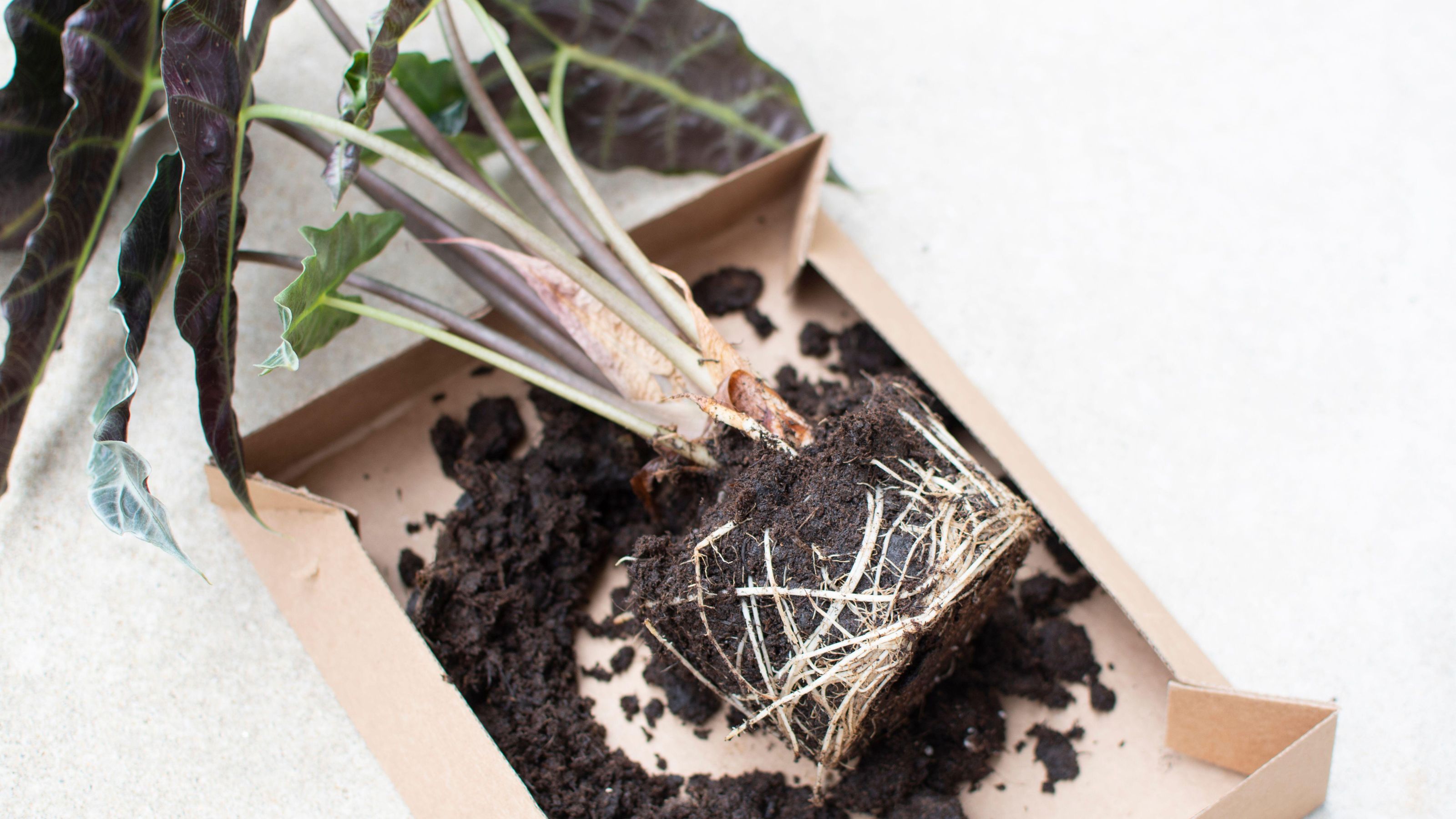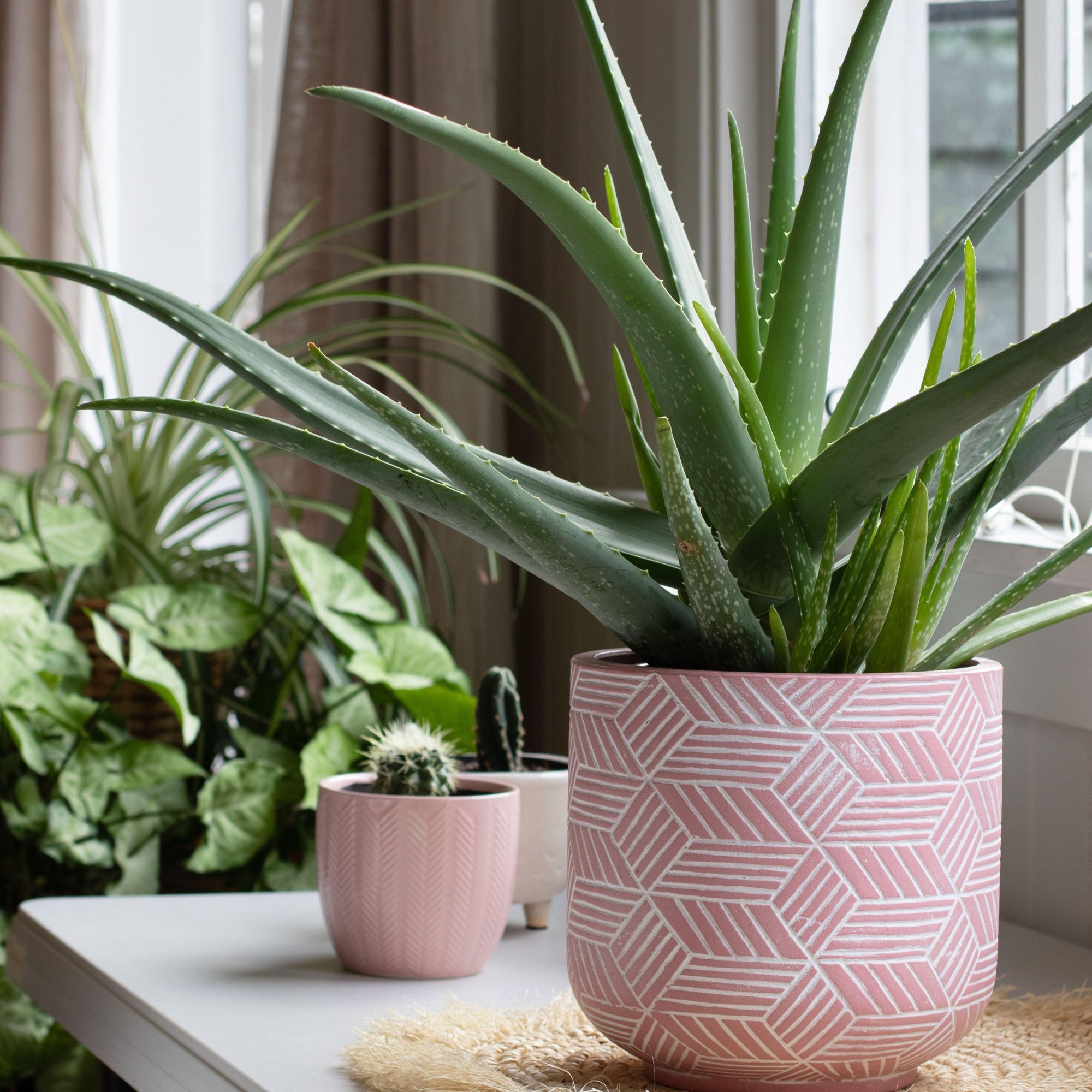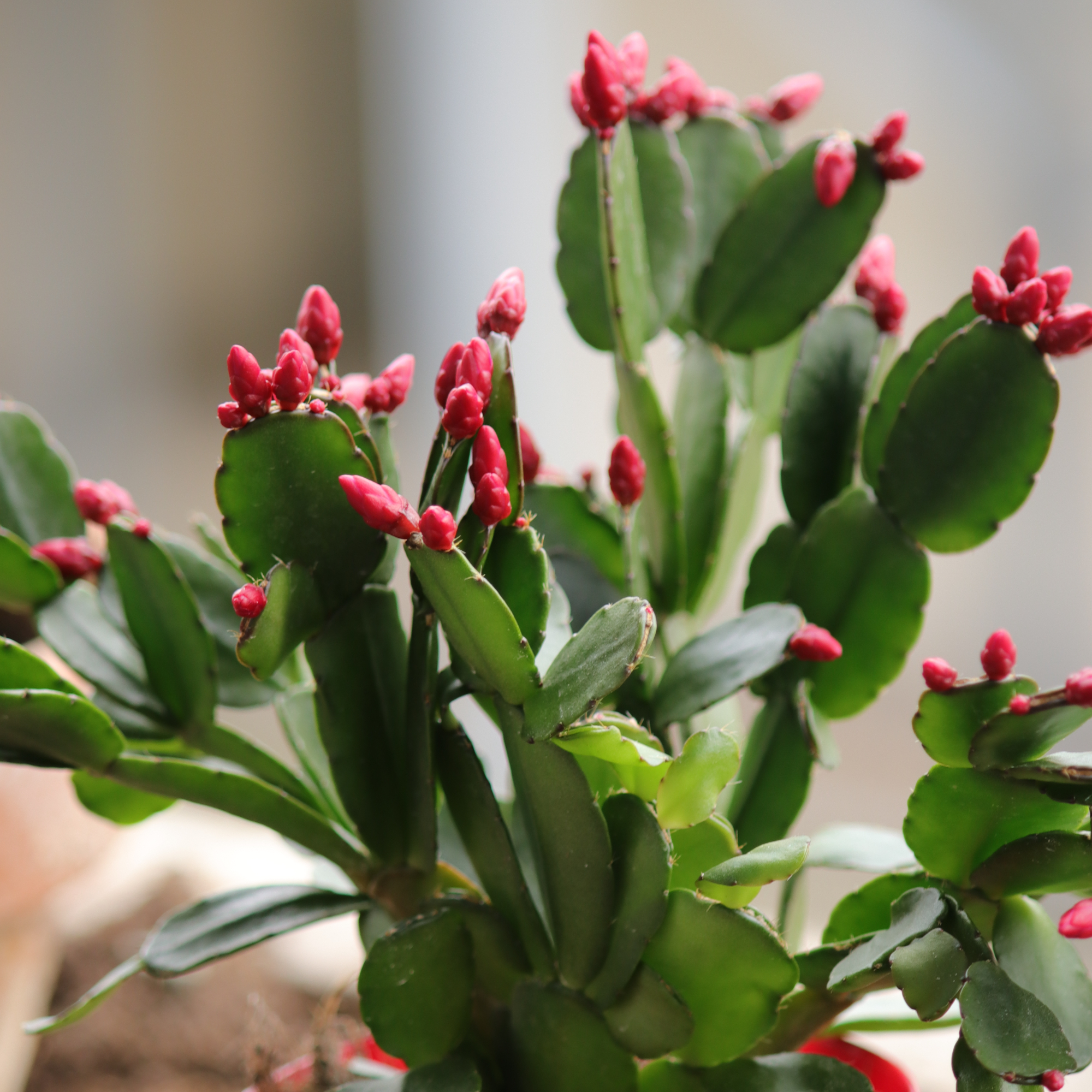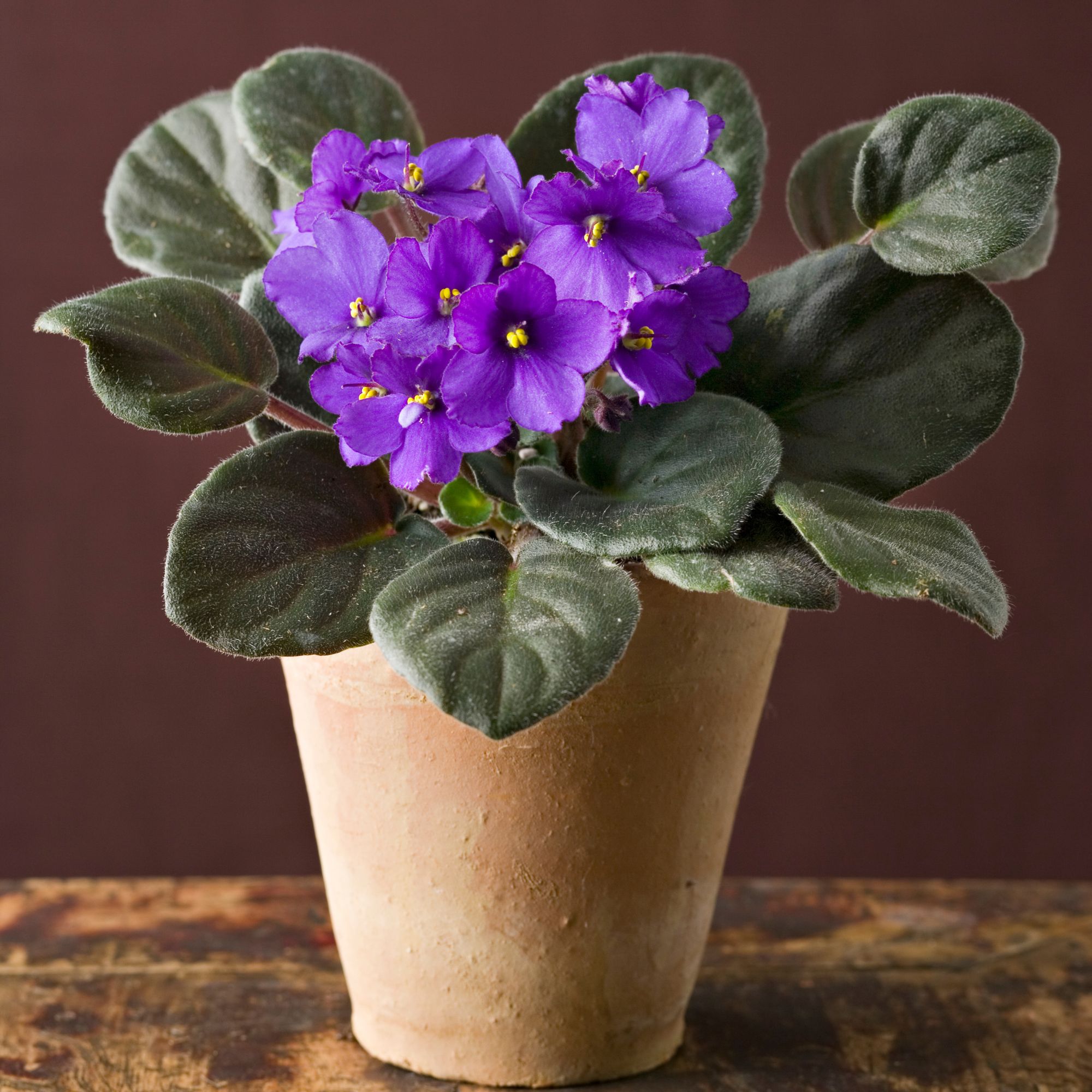Houseplants that like to be pot-bound – the plants that'll thrive in small space
We've rounded up six of the most popular varieties


It may surprise you to learn that there are lots of houseplants that like to be pot-bound – thriving in a more constricted environment.
With these houseplant ideas, repotting more frequently than necessary can cause shock and impede the plant's growth. Instead these plants all benefit from being slightly pot-bound.
Pot bound or root bound refers to the point when a plant's roots have grown as much as they can and are tightly packed within a pot. For some plants, this will cause a significant decline in their well-being while for others, they will benefit from the compact setting.
All plants will need to be repotted from time to time, however, some plants need to be repotted less often than others. For this reason, the houseplants that like to be pot-bound are also houseplants that are easy to care for.
Repotting is an essential element of houseplant care – knowing when to repot houseplants as well as how to repot houseplants are both vital skills to ensure the health and well-being of your plants, even if you only grow houseplants that like to be pot-bound.
1. Spider plant

As anyone who knows how to care for spider plants will tell you, spider plants are super easy to care for. Spider plants have thick, fleshy roots called rhizomes, designed to conserve water during drier spells, and while they will benefit from semi-regular repotting – they can cope well with being root-bound. After all, they are one of the most unkillable houseplants.
When the roots start growing out of the base of the pot or when the plant seems to be a little lack-lustre, repotting can be beneficial. Always repot your spider plant if you need to remedy overwatering or over-fertilising.
Sign up to our newsletter for style inspiration, real homes, project and garden advice and shopping know-how
Where to buy a spider plant:
2. Aloe vera

One most Instagrammed house plants aloe vera thrive while being a little constricted. However, it is essential to know how to care for an aloe vera to prevent it from outgrowing its pot and beginning to fail. The signs that your aloe needs repotting include slow growth, a top-heavy plant or the soil drying out too quickly.
Where to buy aloe vera:
3. ZZ Plant

According to experts at Lively Root, 'ZZ plants tolerate being slightly pot-bound but will benefit from repotting every 2-3 years.'
One of the reasons for this is the ZZ plant's durability. 'Practically unkillable, ZZ Plants can survive in virtually any environment,' adds Nathan Raab, MD of Quirky Plants. 'Since they can thrive without the need for humidity, light or warm temps, ZZ’s are a great way to add a touch of green to shady corners, leaving the brighter real estate of your room free for the plants that need it most.'
Where to buy a ZZ plant:
4. Peace Lily

One of the best houseplants to boost your mood, peace-lilies are loved for their beautiful, long-lasting blooms. Plus, they are easy to care for and like to be pot-bound.
Peace lilies are quite slow-growing plants and therefore only need repotting every couple of years at most.
'Peace Lilies are relatively easy to care for, making them ideal for both beginner and experienced plant owners. They thrive in low to medium light and require minimal watering, typically once a week,' says Jo Lambell, founder of Beards & Daisies.
Where to buy a peace lily:
5. Christmas Cactus

Christmas cactus are super easy to care for and like the others on this list, are one of the houseplants that like to be pot-bound. This makes caring for a Christmas cactus delightfully easy.
However, if you are struggling to get a Christmas cactus to bloom, then it is worth learning how to repot a Christmas cactus, as the extra nutrition from the new soil can promote blooming.
If you don't own one yet, be aware they are unlikely to be in stock until mid-autumn.
Where to buy a Christmas cactus:
- Gardening Express: Flowering Christmas Cactus 'Schlumbergera'
- Crocus: Red and white Christmas Cactus 'Purple Dancer'
6. African violets

African violets are one of the most easy-care colourful houseplants. One of the ways that African violets are easy to care for is the fact that they are houseplants that like to be pot-bound.
According to Claire Akin of the African Violet Resource Centre, 'African violets are among the few plants that prefer to be root-bound. This preference results from its native growing regions of Tanzania, Kenya, and eastern Africa, where these plants grow on rocky cliffs and crevices with limited space. Because of this, a smaller pot size of about 4 inches in diameter is typically adequate to keep an African violet happy for a long time, up to 50 years in fact!'
However, she advises looking out for signs such as roots growing through the drainage holes, slow growth or a lack of flowers which indicates that the plant needs repotting.
Where to buy African violets:
- Waitrose: Saintpaulia 'Top Dark Blue' African Violet
- Crocus: Saintpaulia 'Top Dark Blue' African Violet
FAQs
Which houseplants like to be pot-bound?
Spider plants, aloe vera, ZZ plants, peace lilies, Christmas cactus and African violets all like to be pot-bound. However, it is important that they do not become excessively pot-bound to restrict their growth and nutrition.
How do I know if my houseplant needs repotting?
Signs that your houseplant needs repotting, includes:
- Roots growing out of the base of the pot
- The plant is wilting
- A lack of new growth
- Water runs straight through the pot when you are watering
- Plant drying out quickly
- Plant not flowering (if it typically does)

Holly is one of Ideal Home’s content editors. Starting her career in 2018 as a feature writer and sub-editor for Period Living magazine, she has continued this role also adding regular features for Country Homes & Interiors and the Ideal Home website to her roster. Holly has a passion for traditional and country-inspired interiors – especially kitchen design – and is happiest when exploring the countryside and hills of the Lake District. A keen gardener, she is a strong believer that you can never have too many houseplants.